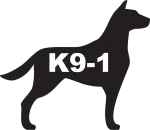Up to this point you have mainly been using a continuous reward schedule (a reward after every correct behavior). Since it is unrealistic to give a dog a primary reward such as a treat, petting, or a toy after every single command you give him in life, you should start moving your dog to a variable reward schedule.
Although you should still always let your dog know that he is doing what you like by using praise (scientifically a secondary reward) at the proper times, you will start to thin out the ratio in which that praise will be paired with a primary reward.
Doing this properly will actually improve the reliability of the obedience training over extended periods of time.
This is why:
On a continuous reward schedule, the dog may become satiated with treats, toys, or petting as the day goes on, and will lose motivation to obey. This basically means that the dog will get full, bored, or otherwise reach his fill while you may still need more motivation from the dog.
Also, if a dog expects a reward after every requested behavior, the reliability of that behavior will extinguish quickly if you, as a handler, are unable to, for a variety of reasons, reward the dog every time. Think of yourself as a candy vending machine. When we put money into a candy machine, we expect a reward every time we do that behavior. If candy does not come out, it is unlikely we will repeat that behavior more than once or twice before deciding it is not worth it to try again. A dog, like us, will not repeat a behavior many times that he would rather not do, if the reward for doing so is not available when expected.
A variable reward schedule, which you want to slowly change to, is more like a slot machine than a candy vending machine. We will put money into a slot machine for a much longer period of time without getting a reward, because we are not sure exactly when we will be rewarded. Casino's however know about how often to reward us, on average, to get us to repeat that behavior the most times without a reward before we give up.
We, like the casino, must master the reward ratio that our individual dogs will work for best. This will be different for every dog. As a rule, you want to find a ratio that is thin enough to not satiate (fill) your dog within the time frame you interact with him, but also dense enough to maintain reliable motivation from the dog.
To do this, it is best to start with a very dense schedule of reward. This means you will reward the dog MOST the time the dog does the behavior and only occasionally (and randomly) not reward the dog. Slowly, thin out the schedule until the dog is randomly getting rewarded LESS than the times he is not rewarded. Remember to still praise the dog every time either way. Exactly how thin you make the schedule will depend on many factors unique to your dog and situation, but only go as thin as you can go without sacrificing reliability.
Done properly, you will not need to carry around a pouch full of treats everywhere you go. Half a handful in the pocket may be more realistic and eventually less than that as you master using other motivational factors in further phases of the training. Keep in mind, that we do not need any pouches or pockets to carry a supply of hands on affection. This can be just as motivational, if not more than treats, if we maintain a properly balanced and controlled relationship with our dog.
Remember, you can use treats, hands on affection (not simply praise), and play (such as tossing a ball) all as rewards on a variable schedule depending on what you are doing and what will motivate your dog most at the given time.
While training your dog to the "sit" command, you can apply the variable reward schedule to the dog in two different ways:
One, you can reward the dog variably after the end of a full sit duration. After, you "free" the dog from the sit command you will always praise the dog, but only sometimes give a reward.
Two, you can variably reward the dog at intervals during longer sit durations. So, while the dog is sitting you can encourage the dog to remain for a longer period of time by praising the dog at intervals and sometimes giving the dog a primary reward such as a treat or affection while the dog is still in the sit command. After, you "free" the dog from the command you can also either praise and reward or just praise depending on how thin you have made the reward schedule.
Basically, you can vary the reward schedule for both during the sit and after the completion of the sit depending on what best helps the dog to succeed at holding longer sit commands in different situations. You can also vary the amount of time between the variable rewards within the sit command and vary the amount of time the dog is expected to hold the full duration of the sit command to strive for the longest sit commands possible without sacrificing reliability or motivation.
At this stage your biggest challenge will be competing factors in the environment that may be more interesting than the reward you have available for the dog. The next step to gain further reliability from your dog is to understand and practice the theory of Premack Principle whenever possible.

